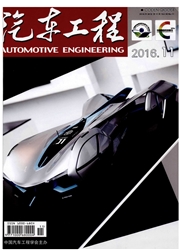

 中文摘要:
中文摘要:
利用MOVES模型研究了北京市机动车的非尾气颗粒物排放随速度的变化规律,结果表明:小客车、小货车、大客车和大货车的非尾气颗粒物排放因子均随着车速的升高而下降。采用统计方法建立了各车型的非尾气颗粒物排放占全部颗粒物排放的比例模型;并应用该模型测算了实施尾号限行措施后,二环路上行驶车辆的非尾气颗粒物排放的变化。结果显示:限行措施实施后,早高峰二环路非尾气颗粒物排放量降低了23.36%;此外,限行前后二环路上非尾气颗粒物排放量所占比例均超过了35%,因此在评估机动车颗粒物污染时,应综合考虑尾气和非尾气两种排放来源。
 英文摘要:
英文摘要:
The vehicle emission model MOVES is utilized to study the law of the change of non-exhaust par- ticulate emissions with speed of vehicles in Beijing. The results indicate that the non-exhaust particulate emission factors of cars, light trucks, buses and heavy trucks reduce with the increase of vehicle speed. Then by using statis- tical method, the models for the proportion of non-exhaust particulate emissions in total particulate emissions of each of four types of vehicle are established and applied to the missions of vehicles running on second-ring road after the prediction on the change of the non-exhaust particulate e- implementation of car-use restriction measure based on the last digit of license plate number. The results show that after the measure of car use restriction is taken, the non-ex- haust particulate emissions of vehicle running on second-ring road in morning rush hours drop by 23.36 %. In addi- tion, the proportions of non-exhaust particulate emissions of vehicles running on second-ring road both before and af- ter car use control exceed 35%, hence both exhaust and non-exhaust emission sources should be taken into consid- eration concurrently in evaluating the particulate emissions of motor vehicles.
 同期刊论文项目
同期刊论文项目
 同项目期刊论文
同项目期刊论文
 Assessment of the effects of highway geometric design features on the frequency of truck involved cr
Assessment of the effects of highway geometric design features on the frequency of truck involved cr Examining signalized intersection crash frequency using multivariate zero-inflated Poisson regressio
Examining signalized intersection crash frequency using multivariate zero-inflated Poisson regressio 期刊信息
期刊信息
